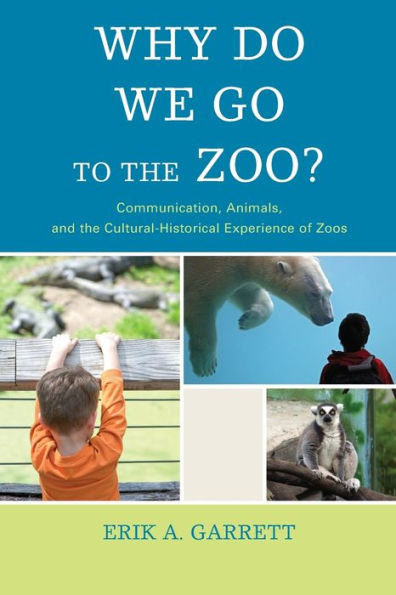Despite hundreds of millions of visitors each year, zoos have remained outside of the realm of philosophical analysis. This lack of theoretical examination is interesting considering the paradoxical position within which a zoo is situated, being a space of animal confinement as well as a site that provides valuable tools for species conservation, public education, and entertainment. Why Do We Go to the Zoo? argues that the zoo is a legitimate space of academic inquiry. The modes of communication taking place at the zoo that keep drawing us back time and time again beg for a careful investigation. In this book, the meaning of the zoo as communicative space is explored.This book relies on the phenomenological method from Edmund Husserl and a rhetorical approach to examine the interaction between people and animals in the zoo space. Phenomenology, the philosophy of examining the engaged everyday lived experience, is a natural method to use in the project. Despite its rich history and tradition it is interesting that there are very few books explaining “how to do” phenomenology. Why Do We Go to the Zoo? provides a detailed account of how to actually conduct a phenomenological analysis.The author spent thousands of hours in zoos watching people and animals interact as well as talking with people both formally and informally. This book asks readers to bracket their preconceptions of what goes on in the zoo and, instead, to explore the meaning of powerful zoo experiences while reminding us of the troubled history of zoos.
"1116599559"
Why Do We Go to the Zoo?: Communication, Animals, and the Cultural-Historical Experience of Zoos
Despite hundreds of millions of visitors each year, zoos have remained outside of the realm of philosophical analysis. This lack of theoretical examination is interesting considering the paradoxical position within which a zoo is situated, being a space of animal confinement as well as a site that provides valuable tools for species conservation, public education, and entertainment. Why Do We Go to the Zoo? argues that the zoo is a legitimate space of academic inquiry. The modes of communication taking place at the zoo that keep drawing us back time and time again beg for a careful investigation. In this book, the meaning of the zoo as communicative space is explored.This book relies on the phenomenological method from Edmund Husserl and a rhetorical approach to examine the interaction between people and animals in the zoo space. Phenomenology, the philosophy of examining the engaged everyday lived experience, is a natural method to use in the project. Despite its rich history and tradition it is interesting that there are very few books explaining “how to do” phenomenology. Why Do We Go to the Zoo? provides a detailed account of how to actually conduct a phenomenological analysis.The author spent thousands of hours in zoos watching people and animals interact as well as talking with people both formally and informally. This book asks readers to bracket their preconceptions of what goes on in the zoo and, instead, to explore the meaning of powerful zoo experiences while reminding us of the troubled history of zoos.
57.99
In Stock
5
1

Why Do We Go to the Zoo?: Communication, Animals, and the Cultural-Historical Experience of Zoos
154
Why Do We Go to the Zoo?: Communication, Animals, and the Cultural-Historical Experience of Zoos
154Paperback(Reprint)
$57.99
57.99
In Stock

Product Details
| ISBN-13: | 9781611478709 |
|---|---|
| Publisher: | University Press Copublishing Division |
| Publication date: | 10/19/2015 |
| Series: | The Fairleigh Dickinson University Press Series in Communication Studies |
| Edition description: | Reprint |
| Pages: | 154 |
| Product dimensions: | 6.00(w) x 8.80(h) x 0.60(d) |
About the Author
From the B&N Reads Blog
